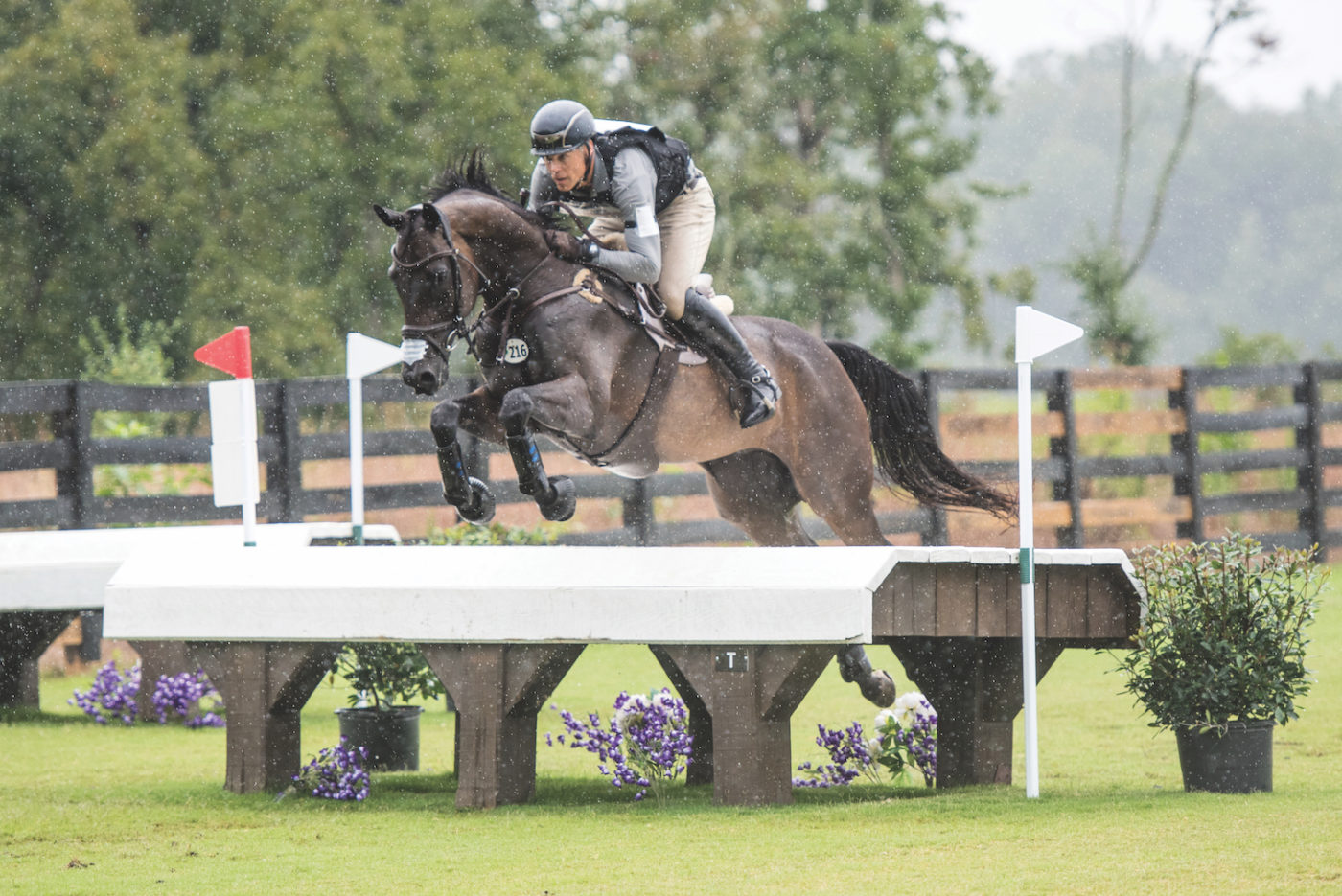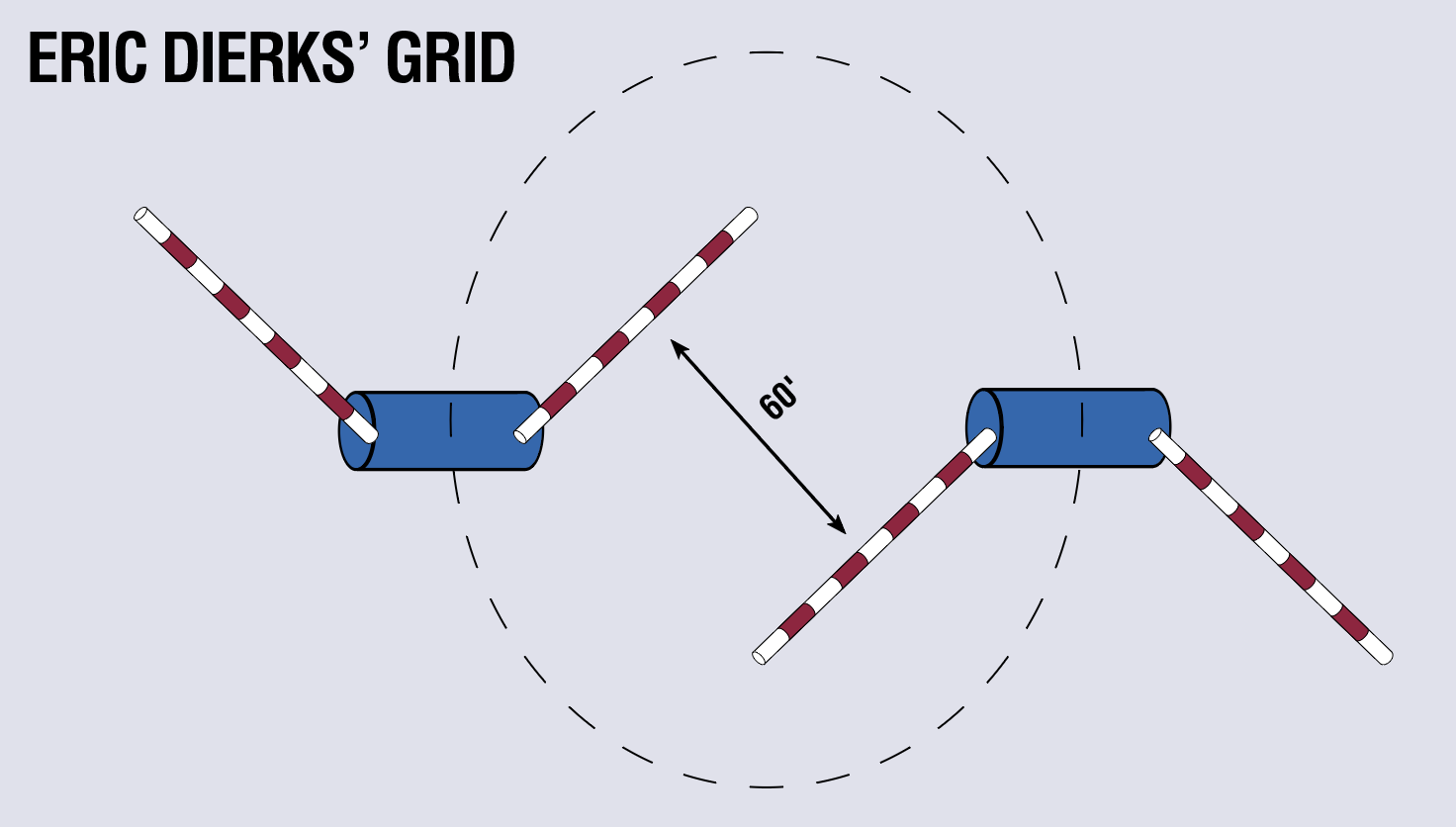

Ready to spice things up this winter training season? Do you want to use being stuck in the arena as an opportunity to fine tune your riding? In this series, we are revisiting some of our favorite Grid Pro Quo articles from Eventing USA to help you use the off-season to your advantage and keep you and your horse in tip-top shape for when it's time to get back out there. Click here to check out other past Grid Pro Quo exercises!
I’ve always wanted a formula for achieving a consistent, balanced jump. I knew that if I could figure out this formula, then when I approached a complex question at home or while showing, my horse would be given a fair chance to think on their feet to not only get through the question at hand, but go away a more confident horse. Too often our horses are trying to carry a compulsive rider that is working to control the situation, rather than trusting them to do their job. Through a systematic approach of putting attention to the elements we have an influence over, not only are we allowing our horse to use their instincts to our advantage, but you will find more consistency in your outcome.
I have found that this exercise, though deceptively simple on paper, has a big impact in helping create a consistent, balanced jump. Not only does it help both the horse and rider achieve and understand straightness, but more importantly it helps the rider recognize the aides needed to support the desired balanced horse. Another reason that I love this exercise is because it encourages riders to feel and be more proactive rather than being reactive or waiting to be told what to do by a person on the ground. If you screw up in this exercise, you are going to feel where you are at fault right away, and because of the repetitive nature of the exercise you will be able to adjust while in motion and try again until you get it right, encouraging you to think and feel while on course.
In my years of teaching, there has always been the challenge of communicating the feel for impulsion, straightness, and pace. Riders often may be able to accomplish one or two of these points at a time, but in order for both horse and rider to achieve a consistent, balanced jump, all three points are vitally important. I stress to my students that a consistent, balanced jump cannot exist without impulsion, straightness, and pace. And rather than obsess over the goal of having a perfect jump each and every time, they should instead hone in on the components that make a balanced canter. Here’s a quick checklist that I ride, teach, and problem solve by in this order:
Rider Position: The rider must be in a balanced position with independent aides. Any abrasiveness will result in the horse’s tension against the rider.
Impulsion: This is the desire to go forward. Your horse has to want to go forward. This has nothing to do with speed, but the impression off of your aides to want to push off their hind limbs.
Straightness: This is the line of direction where you intend to go. Your intention is your future track, not present. If your intent is on your present track, that could be counteractive and the horse will get confused with too much interaction trying to find the line.
Pace: This is the speed of the horse in relation to gait, stride length, and tempo. A consistent pace is achieved only when gait, stride length, and tempo don’t vary; and along with impulsion and straightness are not taken over by forward momentum. All these components change the action of the hind leg, producing more engagement. The pace has to match the obstacle you are jumping. Jumping a wide table will require a different pace with less engagement than an upright vertical requiring more.
One of the many reasons why I love this exercise is because it doesn’t require a lot of equipment, so my students are able to easily set this up in their arenas at home. Another great aspect of this exercise is that it doesn’t take up a lot of room in your arena, so if you’re limited in your riding space, you can have this set up and still have room to have a productive dressage school. Additionally, you can use this exercise for all levels of riders by simply adjusting what you use as your jump. My lower level riders can practice this by using a plastic cavaletti block if they are not ready for a barrel. And if you’re looking for an added challenge, upper level riders can practice this by using a barrel standing upright.

When warming up for any jump school, I like to touch on the ideas of rider position, impulsion, straightness, and pace that were discussed earlier. I want to see that the rider is in balance, with a supportive leg and supportive upper body position. I also want to see that their horse has a desire to go forward, but that their speed is not taken over by forward momentum. The rider needs to be able to control their pace, so they are choosing the speed at which they are traveling, and more importantly, that this pace is kept regular throughout the exercise. Finally, while warming up, I like to see that the rider is always thinking ahead, meaning that their intention is beyond where they are currently, and always on where they are going. I find that once riders start thinking ahead, their horses will become straighter and more confident.
Once the riders are demonstrating the balanced position, impulsion, straightness, and pace appropriate for their level, I will have them come back to the walk so they can begin their jumping exercise. To start, I will have the riders walk the exercise with their focus being only on opening their knee and wrapping their legs around the horse as they enter the chute. The only thing I want to see is that the horse reacts to their leg, which means it is completely okay for the horse to take a trot or canter step before the barrel as long as speed or forward momentum doesn’t take over. If the horse is leery of the barrel or obstacle holding the wings for the chute, keep forward motion, and allow your horse to jump the wing until comfortably going straight over the barrel.
While many riders find that walking jumps can be awkward and uncomfortable, I find this to be an invaluable exercise in helping riders learn to really understand a supportive leg before a jump, even when they feel as though their horse may be taking them to the obstacle. What riders will find is that if they take their leg off, their horse will most likely add in an extra stride or zig zag their way to the barrel. And this is key to teaching a rider that not only is their leg important for going forward, but it has a large contribution to straightness over their reins.
I like to walk the exercise until the rider feels comfortable sitting and not getting ahead with their upper body. I like to use the analogy of keeping their three seat bones plugged into their saddle like a three prong electrical cord.
Once my riders are comfortably and confidently walking the exercise, I will move on to trotting and cantering the exercise. The same principles apply as you move onto trotting and cantering, but remember that you can always come back to the walk if you run into trouble. The most common problem I see is riders trying to steer their horse over the barrel, versus having their leg wrapped around their horse while keeping their intention on the future track beyond the obstacle. This is where remembering to always think – and look – ahead to where you want to go comes in handy. The intention needs to be beyond the jump, not just to the jump in front of you. The consequences are a reactive rider versus a proactive rider.
As you move through the exercise you can start making little courses by jumping the wings of your barrels as ways to change direction. And since the chute is set so wide, you can also practice jumping into the chute making the exercise a degree more difficult. But while your options for making a course are limitless, don’t be afraid to practice doing the same loop over and over to practice consistency.
Based in Union Grove, Wisconsin, Dierks splits his time between competing, training, and coaching out of his family's Stonehedge Farm. Dierks has brought many horses and riders up through the levels of eventing, and is a strong advocate of education. He believes that the equestrian world is an art of peace, rhythm, and communication, and that no matter what discipline, success is measured through horse and rider understanding. To learn more about Dierks, visit ericdierks.com.
What’s a Hunter Pace? The Sherwood Forest Equestrian Center's Hunter Pace is a cross-country-style course around Sherwood Forest over various natural obstacles/terrain. The course ends with a final treat for riders to take in stunning views of Mt. Hood with a loop through the old Far Hill Farms field. The beginning of the course will first start with a warm-up loop around show jumping obstacles in the outdoor ring at Sherwood Forest and then riders will continue directly onto the course. Sign up as a solo rider, pair, or team.
Claire Allen remembers when she was 11 years old, having just made the switch from the hunter/jumper ring to three-day eventing. She told her new eventing trainer that her goal was to one day compete in the United States Equestrian Federation’s Eventing Young Rider Championships.
As he was finishing tacking up his horse in preparation to navigate the cross-country course at the 2024 Twin Rivers Summer Horse Trials, James Alliston expressed concern about navigating the 101 Freeway. That’s because as soon as he crossed the finish line aboard Intermediate level winner Addyson (Ampere x Nickerbocker) at 10:38 a.m. on Saturday—his fifth cross-country round of the morning with three at Preliminary and two at Intermediate—the West Coast-based five-star rider had to drive 185 miles on the 101 Freeway from Twin Rivers Ranch in Paso Robles, California, to San Francisco International Airport to catch a 4:35 p.m. flight to Frankfurt, Germany.
There is so much more to proper grooming than keeping your horse picture-perfect for the horse inspection. Good grooming practices are critical to proper horse management, no matter if you are planning for your next FEI appearance or your Starter level debut. To help you maximize your knowledge of grooming practices, we opened up the opportunity for USEA members to submit any questions they might have on our Instagram and Facebook stories. In this week's episode, Host Nicole Brown sits down with three of the highest-regarded grooms in this industry, Max Corcoran, Emma Ford, and Stephanie Simpson, and asks them all of your questions and more to help you perfect the art of grooming.